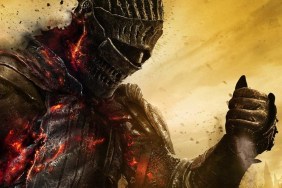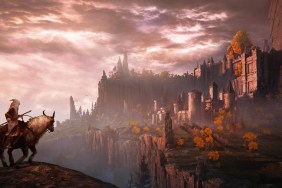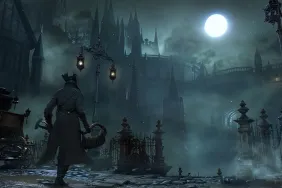The Dark Souls series may be the height of FromSoftware’s ascension to becoming a gaming icon, but before the first flame was lit, the studio stumbled until a surprise hit achieved worldwide acclaim.
We left off last week in Part 1 with the fading Tenchu series, which became a shadow of its former self. As each subsequent game released, it began to lose relevance as new series like Assassin’s Creed and Splinter Cell rose in popularity.
A new Japanese RPG was developed by the studio, Enchanted Arms, which was strangely published by French publisher Ubisoft. Released for Xbox 360 on January 12, 2006 and then almost a year later on PS3 on January 27, 2007, the game featured the SpeedTactics Battle System. It was a grid based system with characters taking turns in a fast-paced manner. The producer of the game from Ubisoft, Marc Fortier, told Game Info Wire, “The dev team’s approach was to bring the best RPG features together into one system that offered a wide variety of tactical options for hardcore RPG fans, but could also be used easily by mainstream users.”
To get a glimpse of the battle system and how it’s similar and different to From’s other titles, here’s an old trailer for the game.
The game remarkably had over 100 playable characters for your party as you unlocked synthetic machines called golems throughout the adventure, and you had co-op attacks with your team members to unleash on your enemies. However, Gabe Graziani from GameSpy found in his review that “The Golems you acquire over the course of the game rarely eclipse the humans in your party in terms of strength or flashy attack variety.” Points were given to the characters as experience, and they weren’t tied down to classes; whatever role you want to give them, like a healer or a tank, is up to you.
Despite the open customization that characters could have and the vast number of them you can include in your party, the reception to the game was mixed with a 64 Metacritic rating on PS3. It was savaged for its irritating dialogue. “Makoto, one of Atsuma’s teammates, is the worst type of homosexual stereotype,” Greg Miller wrote for IGN. “He’s lisping, fawning over another male teammate, dressed awkwardly and forced to spout lines such as ‘The final blow!’ in ways that will leave you feeling dirty.”
GameSpy also disliked the characters, especially the protagonist, Atsuma. Graziani said, “On top of the hamfisted dialog, the main character Atsuma is monumentally stupid. You have no way to intercede in the hopelessly idiotic decisions he makes, and thusly you are dragged along on the comedy of foolish errors that is his brain-dead existence.” He also thought the voices and the script are “terrible.”
One of the most important elements of a Japanese RPG is an engaging story, and unfortunately, Enchanted Arms didn’t cut it. It seems like it was unfamiliar territory for the studio, and it’s pretty clear that FromSoftware, at this point, was not known for making compelling stories.
The next major release for FromSoftware was Ninja Blade on January 29, 2009. We won’t go too far into this as it is an Xbox 360 console exclusive, but this action title had a mediocre critical response as well with a 68 Metacritic score. It was deemed a repetitive slog, but its cinematics were praised by most critics. Kevin VanOrd from GameSpot called it “derivative” but he said it had a”bunch of silly, stylish fun.” As the Xbox 360 era was reaching its fourth year on the market, Ninja Blade was able to impress VanOrd with its graphics. He said, “Ninja Blade‘s visual splendor comes from its boisterous special effects, fantastic in-engine cinematics, and some sparkling city environments.”
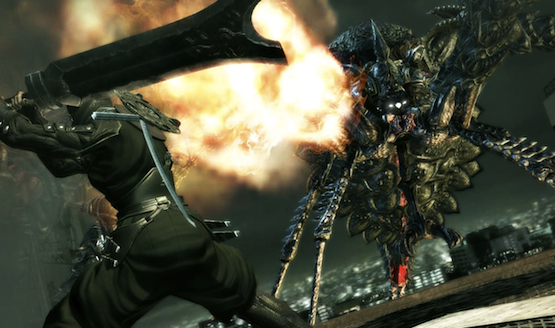
GameTrailers wrote off the game as a “complete rip-off” of the popular Ninja Gaiden series from then Tecmo Koei (now Koei Tecmo), and called it a “blatant theft of creativity.” They also said that “the repetition, easy combat, and lengthy quick time sequences all wear down its edge.” The video review is unavailable to watch as the company shut down years ago, but an overview was provided by Metacritic.
After two mediocre games and a series that faltered into close to nothing, the ashes of the past few years burst into flames. FromSoftware sparked the nostalgia of tough-as-nails old-school gaming into the new generation with the 2009 PS3 exclusive release of Demon’s Souls, a mere week after Ninja Blade. It surprised many. It’s crushing difficulty became a strong pivot for sales. Atlus U.S.A. marketed the game on the PlayStation Store listing and said that it was “the ultimate hardcore RPG experience” and challenged gamers to face the imposssible. Three words Atlus used to describe the game are: “Beautiful, compelling, and unforgiving,” and they were right.
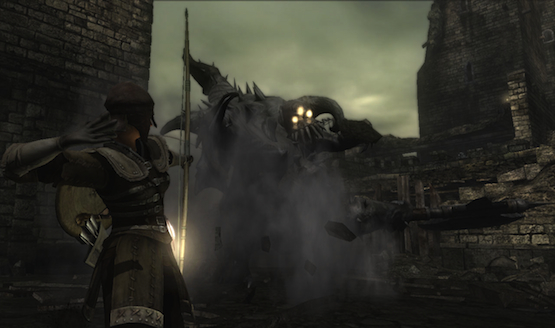
The grim medieval world of the Souls series brought an eerie, yet beautiful look to your surroundings. Every boss was immaculately designed with challenging patterns to learn, a sense of scale, and inspiring art behind it. The series of Souls games also revolutionized the use of online within a single player game. Players could invade at random or help you while playing through the tough levels that FromSoftware created. People could leave notes for other players to help or hinder them on their quest. Blood stains also showed how other players died, giving you context on how to proceed and a sense of dread as you traverse the area.
Shuhei Yoshida, Sony Computer (Interactive) Entertainment’s head of product development, told Game Informer that he played two hours of the game as it was close to final release, and walked away convinced the game was crap. When interviewed by GI, he admitted that he said in the past, “This is an unbelievably bad game.” Yoshida’s initial impressions of Demon’s Souls were at first understandable. The difficult action-RPG failed to meet expectations for Sony with a measly 20,000 copies in the week of its release, according to an interview with The Guardian.
In result, Sony didn’t publish the game in North America, and Atlus took the opportunity, despite the game’s poor sales in Japan. Shocking the world, the game became a success in the west with critical and commercial fame. IGN reported it became Atlus’ biggest game release in their history. The company said, “If ever there was a game championed and made a success by its fans, this would be it.” Yoshida stated that he dropped the ball and with the situation the game was under, it’s hard not to blame him, but this would be a lesson that would be redeemed next generation.
This success was not always apparent during the development of the game, however. Hidetaka Miyazaki, the President of FromSoftware told The Guardian’s Simon Parkin that the project wasn’t doing very well before he stepped in. He said, “The project had problems and the team had been unable to create a compelling prototype.” However, as soon as he caught wind that it was a fantasy role playing game, he took the reigns to help right the ship. He said, “I figured if I could find a way to take control of the game, I could turn it into anything I wanted. Best of all, if my ideas failed, nobody would care – it was already a failure.”
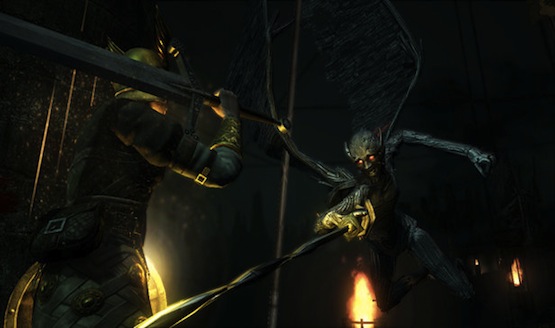
Just five years before the release of the game, he was an inexperienced coder, and in 2009, he released Demon’s Souls as a director. Miyazaki’s take on the project elevated him within the company, and in 2014, he became the President of FromSoftware.
FromSoftware, naturally, moved on to the next Souls project, but this time, it was being published by Bandai Namco as a spiritual successor in 2011.
All of the fundamentals of Demon’s Souls were present in Dark Souls, but the layout of the levels was more open and had multiple paths.
In this game, you were placed within a dark, decrepit world, a sign of the undead has emerged called The Dark Ring. It is your task to remove the curse and reach Lordran, where the kings are present.
Dark Souls was seen as a relentlessly tough, but incredibly rewarding action-RPG. Instead of the cheesy dialogue of Enchanted Arms and the shallow gameplay experience from Ninja Blade from years past, Dark Souls deeply immerses the player into its world with unobtrusive but complex lore and storytelling. It also dove into a complex strategical gameplay focus; each boss’ patterns had players scratching their heads for hours until they can figure out their unique moves.
Josh Fernandes wrote for PlayStation LifeStyle in his review, “Players must learn the moves of the enemy, and then exploit their weakness by making sure they block and dodge at the right time and attack only when the enemy is the most vulnerable.” He also said it was tough but fair. In a generation where games were holding your hand with more cinematic experiences and corridor shooters, Dark Souls and its spiritual predecessor came as a breath of fresh air. Dark Souls later on had a remastered version on the PS4.
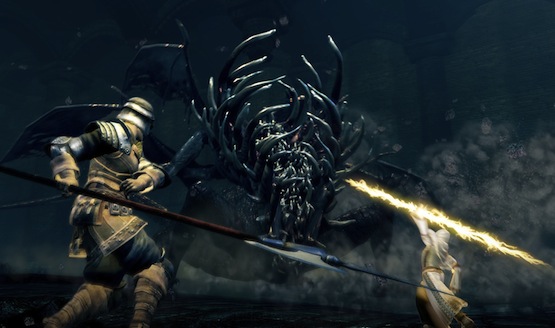
Before moving on, it would be foolish to not mention the haunting soundtrack by Motoi Sakuraba. The combination of the harp and the strings play an enchanting and yet somber melody while in the Firelink Shrine. The music helps you be engrossed into this dark, chilling, and yet beautiful world. However, whenever a boss battle occurs on screen, the music is intense with deeper strings, an enthralling choir, and heavy percussion. It’s truly an epic score of music.
After Dark Souls and Dark Souls 2 had over 8.5 million copies sold combined on all systems (via Eurogamer), the series concluded (so far anyway?) with the release of Dark Souls 3 on PS4, Xbox One, and PC.
Once again, the game had rave reviews. The Telegraph and quite a few others gave it a perfect score. Sayem Ahmed wrote for The Telegraph, “With its unrelenting dedication to an artistic vision that’s reflected through gameplay mechanics, difficulty and visual design, Dark Souls 3’s approach should be applauded, despite any shortcomings.” He then said, “It is one of the most fascinating games you’ll play this year, or any other, a high-profile game that still dares to go against the grain despite its ever growing popularity.” As previously stated, this contrarian genre of RPG that FromSoftware started, within a sea of shooters and cinematic AAA releases, was welcome by gamers around the world.
Paulmichael Contreras said in PlayStation LifeStyle’s review for the game, “Sporting a wonderful environment full of color, suffering, death, and a small amount of hope, fans can expect to sink several dozen, if not hundreds, of hours into the game, if they haven’t already. From Software knows how to make challenging games that reward those who invest the time needed to properly engage enemies, and Dark Souls III continues in that tradition.” He wasn’t impressed by the slow progression, a difficult camera, and “laughably dumb” AI, however, causing a “lower” 8.5 score than some other critics’ consensuses.
On March 24, 2015, Yoshida redeemed himself from his Demon’s Souls mistake, with Sony publishing the PS4 exclusive Bloodborne, which is arguably the best “Soulsborne” (the name given to FromSoftware’s particular genre of tough games) game in the series. Set in a different universe but with similar gameplay, Bloodborne impressed with its stunning visuals of the gothic dystopia Yharnam. This game differed from its cousins with the implementation of the gun. By using it at the right moment, players could put enemies in a weakened state and strike heavy damage into the foe. The bosses continued to amaze with their astonishing models and animation, and FromSoftware once again gave gamers a challenge with its difficult but immaculately crafted game design. In addition, Bloodborne was dripping with horrific atmosphere as you walk through its enthralling dark world.
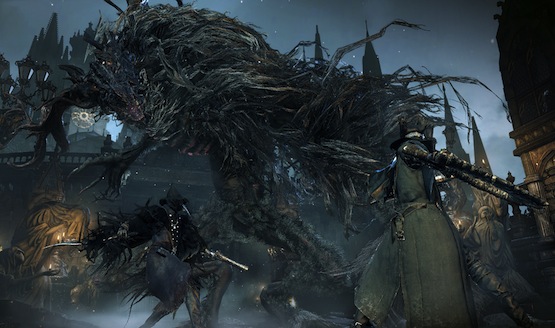
Miyazaki, the director of Bloodborne, said to Fred Dutton on the PlayStation Blog, “It’s not like horror is something we specifically go for, but it’s important to have that sense of fear and terror because it directly ties into the player overcoming that and enhancing their sense of achievement.” From this interview, we now know that FromSoftware’s philosophy is to tie this difficult challenge and the horrific world to keep that sense of fear and accomplishment of overcoming it. This PlayStation Blog interview also has him elaborate on how this game is a reflection of how Miyazaki sees the world; it’s not always kind and it’s “often a harsh and unkind environment.”
Miyazaki and FromSoftware has since moved on from the Souls style of games with no current plans to keep the flame burning with the series. However, their most recent title Sekiro: Shadows Die Twice, does carry the torch of the incredibly difficult enemies from its predecessors, albeit quite a different game than you might be familiar with.
Sekiro, as stated last week, was meant to be a Tenchu game. Miyazaki explained to Famitsu (via Bagoum on Medium) that as development continued and the team was younger and had different design philosophies, they shifted into the game becoming a new IP. They didn’t want to imitate what the previous team has done. However, the team did decide to keep the grappling hook and the ninja stealth kills in Sekiro.
FromSoftware was inspired to create a new Japanese-style project from their previous projects Ninja Blade, Otogi, and Tenchu as they finished work on Bloodborne. Activision may seem like an odd choice to be the publisher of the game, but as Miyazaki explains in that Famitsu interview, he found the American games company useful as they gave advice on “ease of play, comfort, and appropriate onboarding.” These were things the studio obviously needed help with, as the Souls series has crushed newcomers with its challenging difficulty in the past.
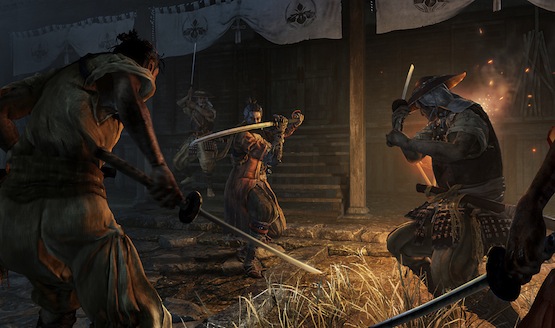
Its design changed from the formula of Dark Souls, which is perhaps causing confusion among the studio’s fans. Instead of a stamina system, Sekiro‘s ninja protagonist deflects with his sword. You have to block at the right times, and then strike when the opponent leaves him/herself open. If you keep up the continued deflects and flurry of blows, eventually you’ll break the enemy’s posture which allows you to move in for a deathblow. Dodging attacks and persistently blocking are rarely rewarded in Sekiro’s combat.
FromSoftware has escaped its past narrative mistakes and has tied the story to the gameplay succesfully. Chandler Wood, the Editor-in-Chief for PlayStation LifeStyle, loved this ninja escapade, and said in his review that the gameplay and story feel “mechanically seamless.” He elaborated that “It blends mechanics and narrative in a way that is too rare in games today, allowing for a deep level of immersion that begs for just one more clash of blades no matter how difficult the encounters get.”
We don’t know how successful Sekiro has been as of the time of writing (though early sales charts tell a promising story), but the game was showered with praise and now holds a 90 Metacritic score. Since the release of Demon’s Souls in 2009, FromSoftware has maintained a high level of quality in its games after a shaky history of development (and a start in software for feeding pigs!). They’ve had their missteps, but their recent past, present, and future seem bright. Praise the sun!
What is your favorite “Soulsborne” game and are you enjoying Sekiro: Shadows Die Twice? Let us know!





